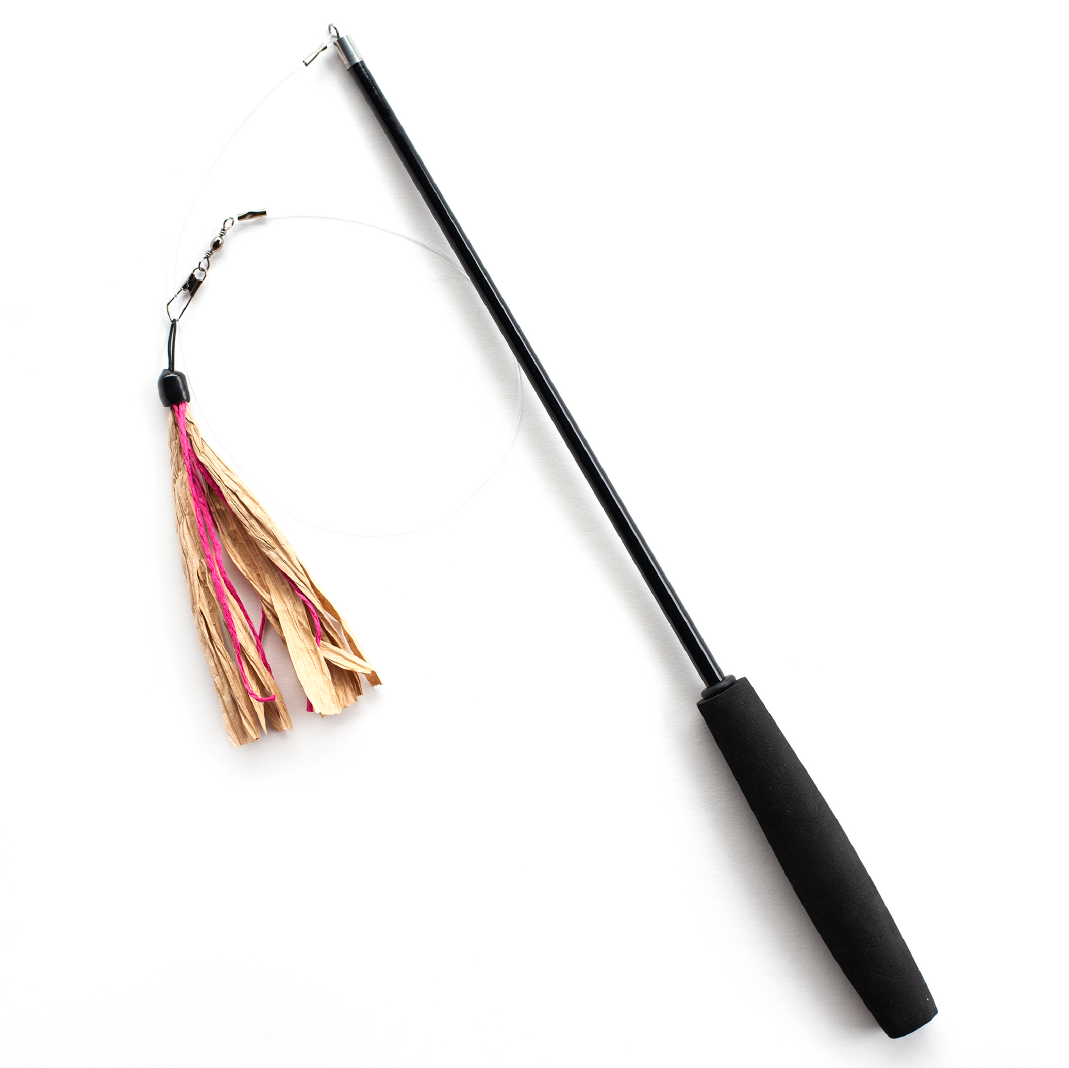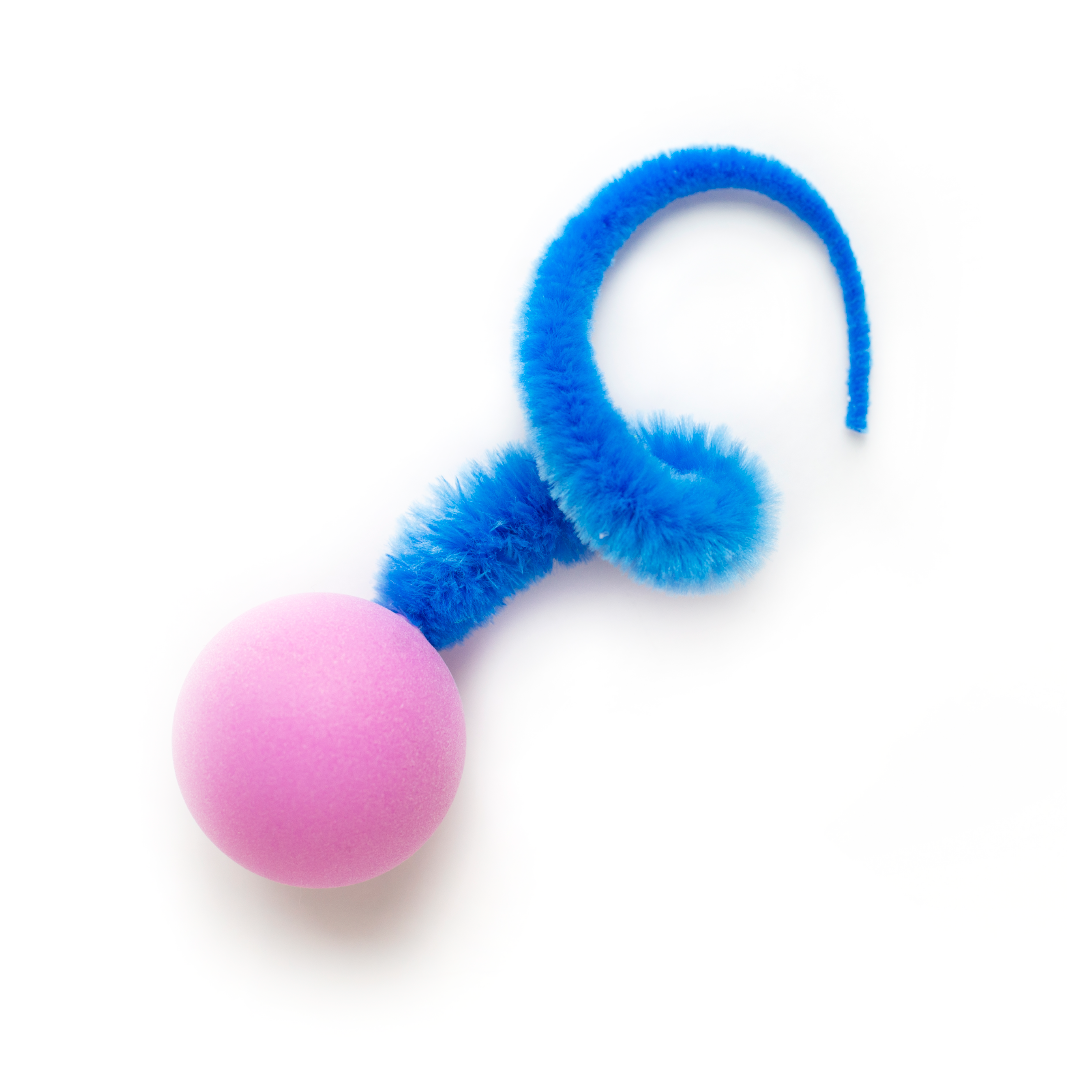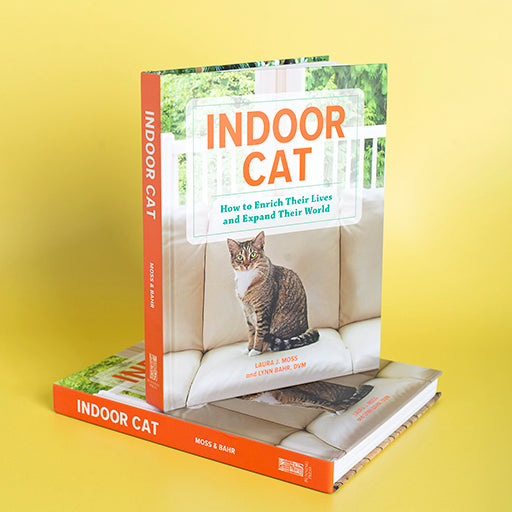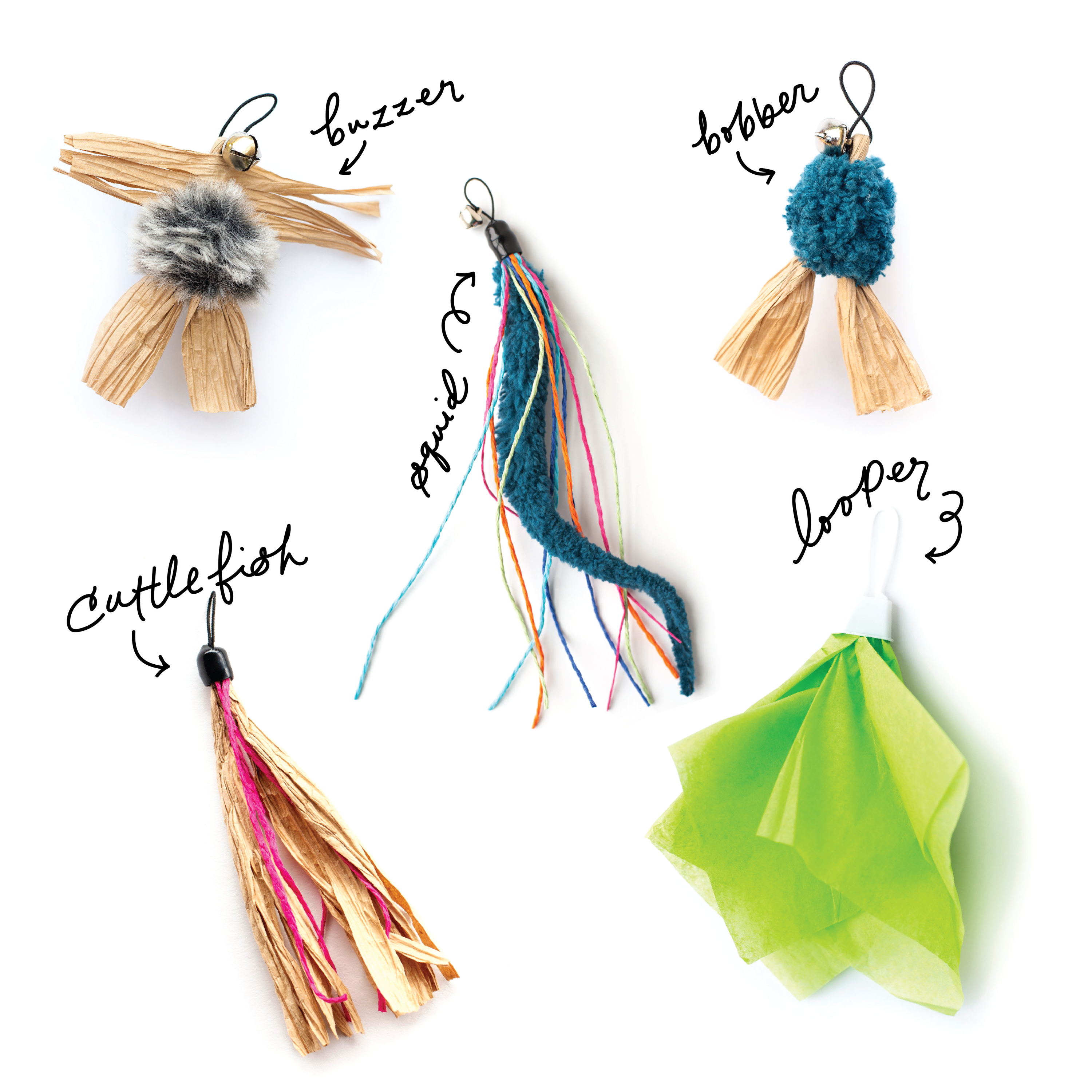How do you get a lazy cat to play with toys?
Time and again, cat owners tell me they stopped buying cat toys because their cats have no interest in playing. They either think their cats are lazy or simply aren’t interested in play. But I’m here to tell you that’s simply not true. All cats love to play. They’ve done it for millennia. And you can help them remember how.
Let your cat observe
Play time doesn’t have to be complicated. You can start small and build up from there. You don’t need expensive toys or complicated tools; a simple string or balled up receipt will do. Let your cat watch you play. Bat the toy around and move it like prey. Let her listen to it, smell it, watch it move.

Observe your cat
A cat with wide eyes who is entranced by a toy is a cat who is interested. Even if he’s not playing quite yet, you can watch for the signs that he’s getting more comfortable with the idea. If you observe him crouched low to the ground, wide-eyed, vocalizing, ears up, sniffing the air, or a twitching tail, he’s thinking about it.
Think like a cat
Cats play in ways that mimic hunting. So think about play time from kitty’s perspective. Think about how real prey would move. Unless your cat likes it, don't simply whip a toy around frantically. Instead, fly like a bug, slither like snake, flutter like a bird, rustle noisy toys like a chipmunk. Keep trying different techniques until you find one that your cat can’t resist.
Buy the right toys
Not every cat will love every toy. And that’s okay. Now that you’ve observed your cat and learned what he loves, you’ll look at toys in a new way. Consider what caught his attention. Was it sound? Movement? Did he like going after toys the air or on the ground? You can find toys for any style of play.
Allow your cat to catch the toy
Remember this last point because it’s the most important: a frustrated cat won’t want to play. In the wild, felines catch their prey around 30 percent of the time. Wild prey isn’t smarter than a cat, but it’s operating on powerful instinct. That little mouse knows how to avoid getting caught. So don’t make the hunt too easy, but don’t tease your cat. Remember, play should be fun. Allow your cat to hunt and catch, and you engage his mind and body. He’ll stay happy and healthy and be more interested in play.
Share:
1 comment
-
We took care of 6 kittens from 2 abandoned cats. One of the kittens would always just watch the other kittens play. We kept this kitten and one other while getting the other 4 adopted out. It took a while to get this kitten to engage in play. She still doesn’t play as much as the other one we kept but she loves chasing and jumping for the little twist ties from the bread wrappers; they are her favorite toys. The first time she played with a twist tie I thought for sure she would swallow it, I kept a close eye on her but she just loves to play with them. At one time she love to bat Cheerio cereal around the kitchen floor but she lost interest in that. The other kitten we kept is ready for play anytime; his favorite toys are some little wool fish; he likes to play fetch, we throw them and he brings them back.
Dan Lange on










